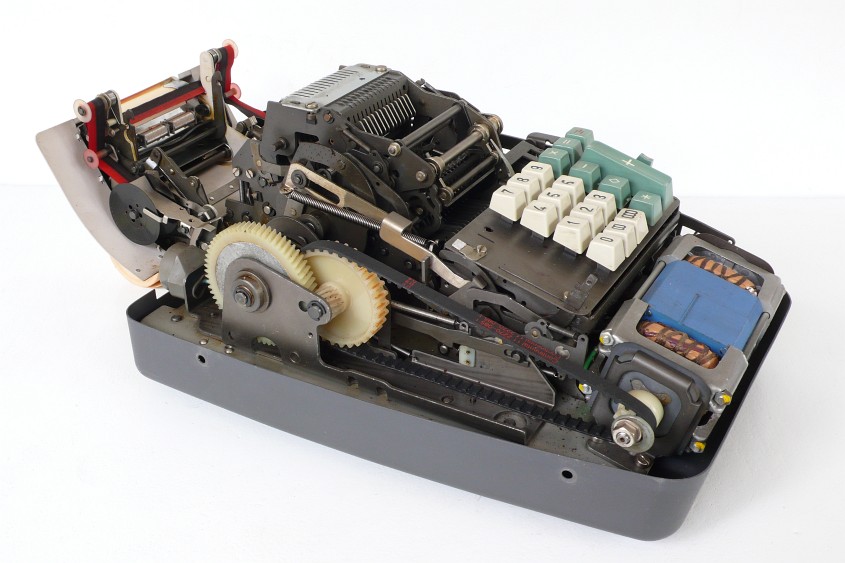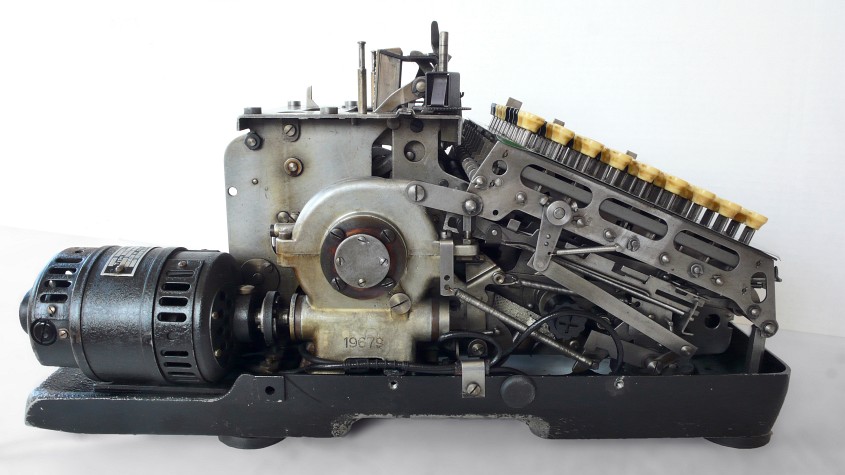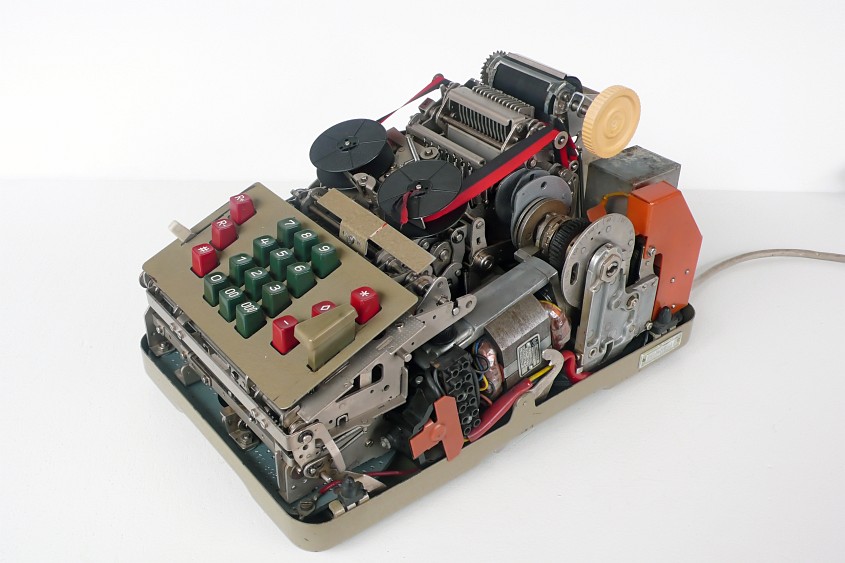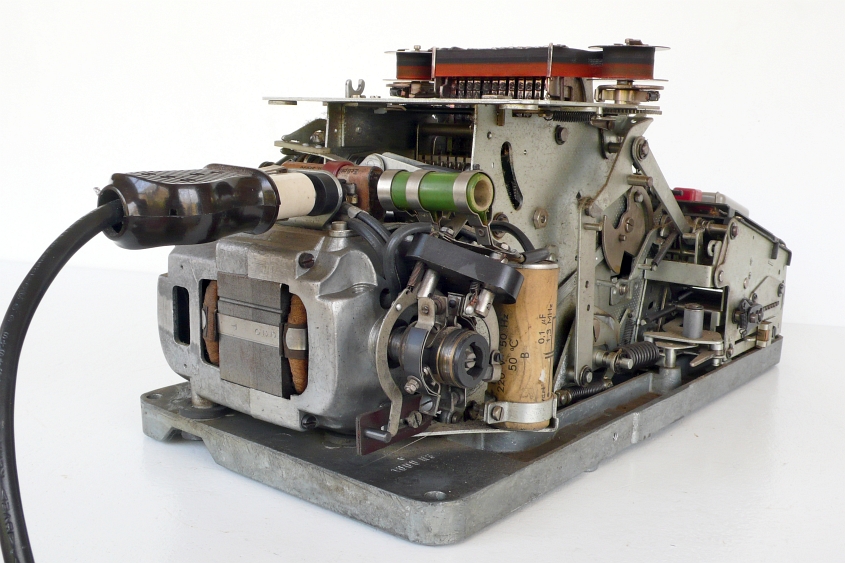Electric motor drive (introduction)
Early mechanical calculators are manual driven. Cranks and handles were used to turn or move the mechanisms. Around 1900 the electric motors became small enough to build-in, although the availability of electricity in offices, was not yet common.
They`re build in for the obvious reason: "ease of handling". One hand operation became possible, and the heavy pulling on handles the whole day, was no longer necessary. In terms of construction it had advantages to. Less heavier constructions, could be used due to the gradually movements, which were executed with less force.
Later manufacturers starts develop automatic calculations, where they need more than one machine cycle to perform multiplications. Electric motor driven machines were in favor here.
The above shown chapters will explain the: Electric motors types used; The special mechanisms used and The electrical precautions who were taken to protect switches and to avoid radio interference. Remember that it was the time that the radio transmission was on MB and electrical networks have to build in to avoid radio interference. Design skills were needed especially at rocking segment machines, where manual driving has a reciprocal character. Electric motors are good in rotary driving, so how to fixed that? Is explained there as well
A few typical electric driven machines trough the time 1935, 1950 and 1965 shown below. The first observation is that during this time technologies had changed. Electric motors for instance from brush used types to brush less ones and the early machines are metal use only and later types use plastic / nylon gears as well, in the drive part:








